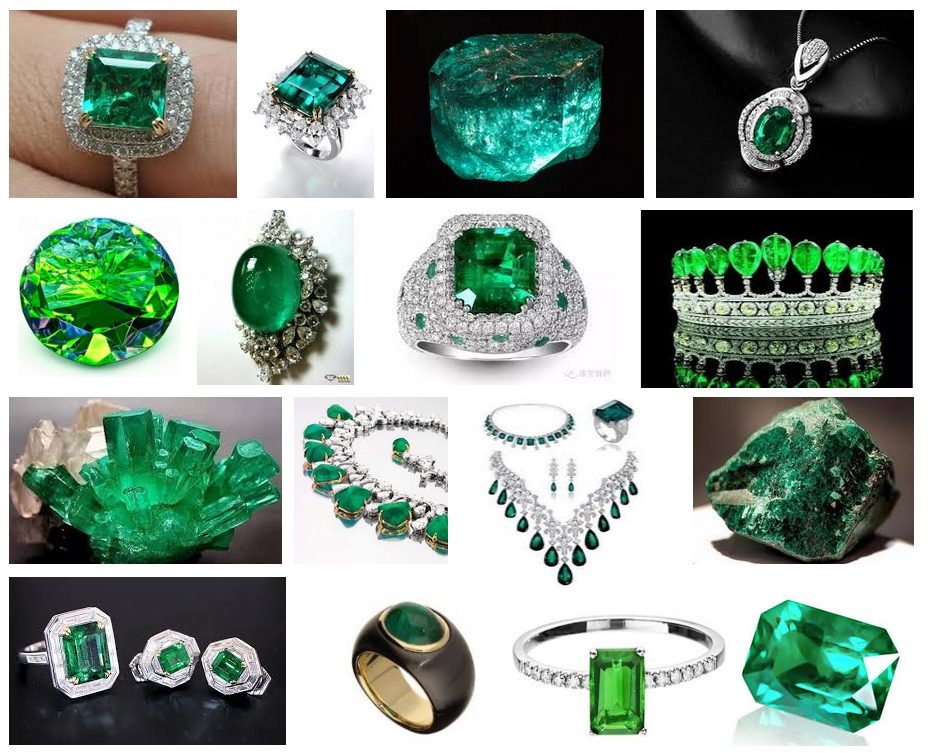
漢德百科全書 | 汉德百科全书
 Energy resource
Energy resource


Smaragd ist eine Varietät des im hexagonalen Kristallsystem kristallisierenden Silikat-Minerals Beryll und hat eine Mohshärte von 7,5 bis 8. Seine chemische Zusammensetzung ist durch Be3Al2Si6O18 beschrieben. Die Farbe ist durch Beimengung von Chrom- und Vanadium-Ionen grün, die Strichfarbe ist weiß.

Diamant ist die kubische Modifikation des Kohlenstoffs und als natürlich vorkommender Feststoff ein Mineral aus der Mineralklasse der Elemente. Diamant bildet meist oktaederförmige Kristalle, oft mit gebogenen und streifigen Flächen. Weitere beobachtete Formen sind das Tetraeder, Dodekaeder und der Würfel. Die Kristalle sind transparent, farblos oder durch Verunreinigungen (z. B. Stickstoff) oder Kristallgitterdefekte grün, gelb, braun und seltener auch orange, blau, rosa, rot oder grau bis schwarz gefärbt.[1]
Diamant ist der härteste natürliche Stoff. In der Härteskala nach Mohs hat er die Härte 10. Seine Schleifhärte nach Rosiwal (auch absolute Härte) ist 140-mal größer als die des Korunds. Die Härte des Diamanten ist allerdings in verschiedenen Kristallrichtungen unterschiedlich (Anisotropie). Dadurch ist es möglich, Diamant mit Diamant zu schleifen. In dem dazu verwendeten Diamantpulver liegen die Kristalle in jeder Orientierung vor (statistische Isotropie), damit wirken immer auch die härtesten unter ihnen auf den zu schleifenden Körper.
Diamant ist optisch isotrop mit hoher Lichtbrechung und hoher Dispersion. Er zeigt Fluoreszenz und Phosphoreszenz und ist triboelektrisch.[1] Er verfügt über die höchste Wärmeleitfähigkeit aller bekannten Minerale.
Das Gewicht einzelner Diamanten wird traditionell in Karat angegeben, einer Einheit, die exakt 0,2 Gramm entspricht (siehe Abschnitt „Gewicht in Karat“).

Diamond battery is the name of a nuclear battery concept proposed by the University of Bristol Cabot Institute during its annual lecture held on 25 November 2016 at the Wills Memorial Building. This battery is proposed to run on the radioactivity of waste graphite blocks (previously used as neutron moderator material in graphite-moderated reactors) and would generate small amounts of electricity for thousands of years.
The battery is a betavoltaic cell using carbon-14 (14C) in the form of diamond-like carbon (DLC) as the beta radiation source, and additional normal-carbon DLC to make the necessary semiconductor junction and encapsulate the carbon-14.
 Life and Style
Life and Style

 Energy resource
Energy resource
 Science and technology
Science and technology


 Automobile
Automobile